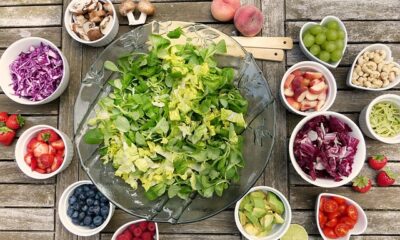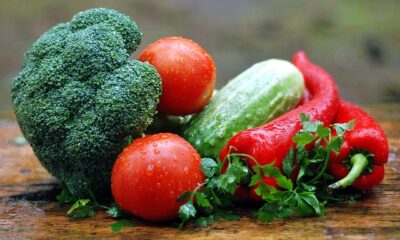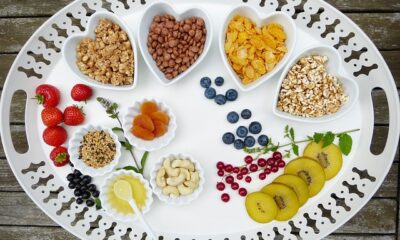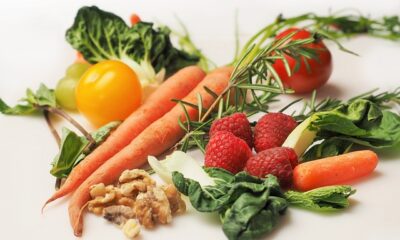Uncategorized
15 Deceptive Myths About Nutritious Eating We’ve Embraced for Generations
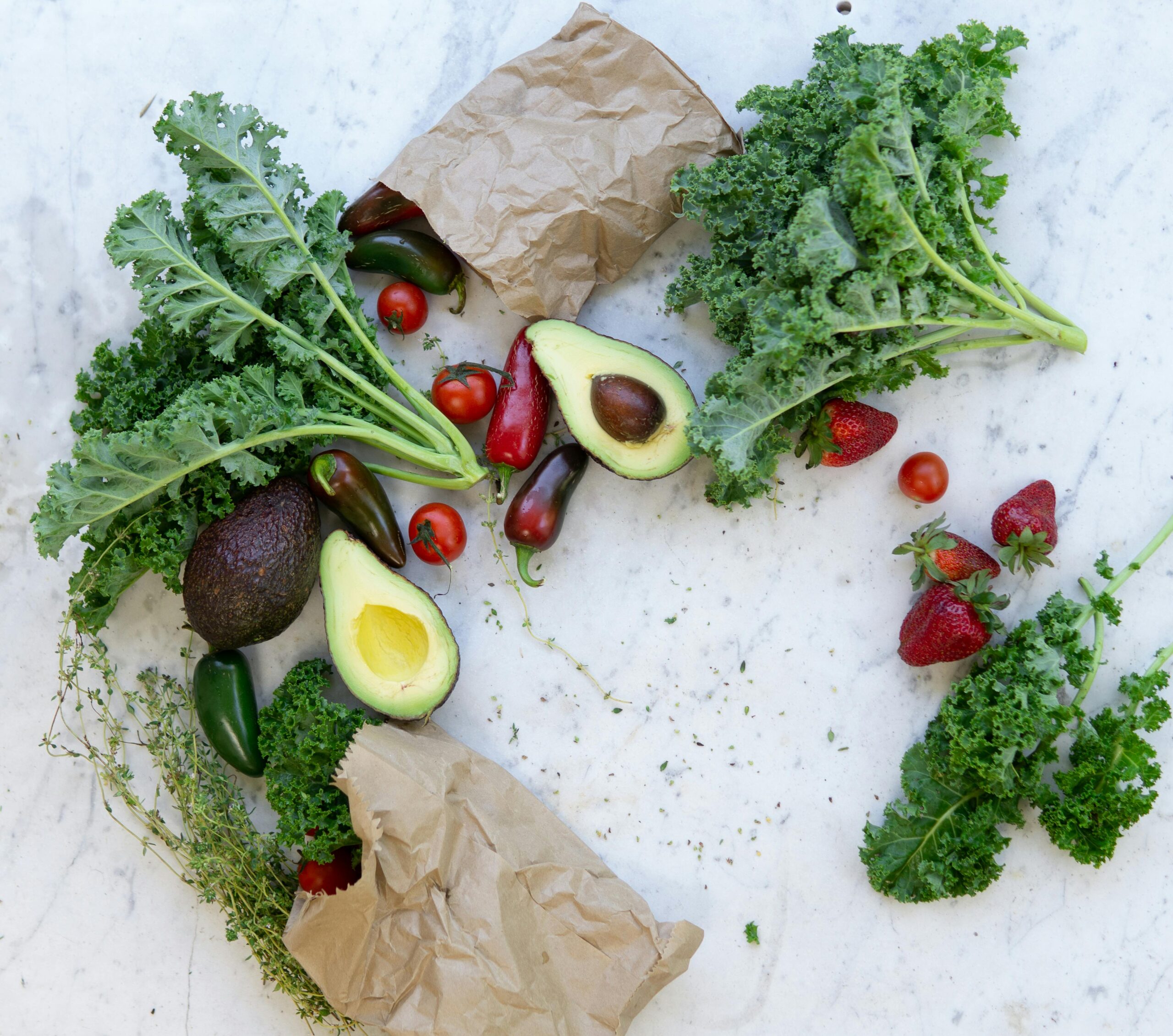
Just imbibe more aqua, prefer pretzels over loaves, and presume yogurt to be inherently salubrious. Correct?
Get a code (RollMoney) for the extra 50 dollars deposit in Rollerads

Introduction
Candied cashews adorn every nook, your intake of uncooked veggies has surged twofold, and sleep often finds you famished. With such a regimen, it’s no surprise you—and countless others—derail from the wellness path. A prevalent misapprehension among those striving for “fitness” is that enduring hunger pangs and perspiring profusely equate to a leaner and healthier physique. You’ll be pleasantly astonished to learn that this notion is, indeed, fallacious. Throughout our lives, we’ve been fed myriad half-truths and outright falsehoods regarding the sustenance we consume, how it should be prepared, and its impact on our bodies. As you delve deeper into the subject, you might be taken aback when you discover that some of your purportedly nutritious staples are more erroneous than that clandestine Kit Kat you surreptitiously indulged in last week. Peruse this compilation to ascertain whether you’re truly advancing two steps forward or regressing by two pounds!
1. Freshness supersedes frozen for healthiness
Frozen fare, unless sourced directly from farm to table, actually ranks as the premier food choice. Fresh edibles typically witness a decline in nutrient content merely three days post-harvest. Considering transit time and temperature fluctuations, it’s evident how nutritional value dwindles before reaching your grocer. Frozen foods, on the other hand, are promptly frozen post-harvest, thus preserving their nutritional advantages until preparation. The downside of frozen victuals may lie in their potential lack of the fresh flavor relished by many. However, this is easily overshadowed by the realization of the economic savings upon switching. Moreover, frozen items exhibit prolonged shelf life, thereby preventing monetary wastage. It behooves one to scout for bargains in this regard.
2. Flavored yogurt constitutes a healthful option
Yogurt, touted as a health elixir, is often inundated with sugar. Unless opting for Greek yogurt, consumption should be curtailed. Flavored yogurt brims with superfluous grams of sugar that outweigh its probiotic content. Even sugar-free or fat-free variants harbor artificial additives, offering temporary satiety that eventually culminates in overindulgence. If plain Greek yogurt fails to tantalize your taste buds, natural sweeteners like honey, raspberries, blueberries, and assorted fruits serve as delectable alternatives.
3. Raw veggies trump cooked in nutritional value
Juice cleanses garner favor due to their freshness and rawness. These elixirs boast beneficial enzymes when fruits or vegetables are freshly pressed, as heating produces above 118 degrees results in mineral depletion. However, humans inherently produce ample enzymes, rendering vegetable nutrients redundant. Vegetables abound in myriad vitamins and minerals, impervious to depletion irrespective of cooking temperatures.
4. 100 percent fruit juice constitutes a salubrious libation
Fruit juice ranks amongst the most detrimental “health foods” one could select, particularly if not freshly squeezed. A single serving of fruit juice inundates consumers with natural and added sugars, surpassing the recommended daily sugar intake for three days. Opting for fruit consumption in its natural state enables the intake of natural sugars alongside dietary fiber. A glass of apple juice contains a meager 0.2 grams of fiber, whereas a whole apple boasts 3.3 grams. The wiser choice becomes apparent. Fruit juice ingestion can also spur increased appetite, potentially inducing overconsumption at subsequent meals.
5. Multigrain bread reigns supreme in nutrition
The multigrain trend, forsaking white bread, and pasta, captivates many. However, discernment is imperative even when embracing whole-grain options. Bread’s refinement quality assumes paramount importance, as most grain derivatives in bread are stripped of vital nutrients. Prudence dictates opting solely for bread endorsing 100 percent whole wheat. “Refined wheat” listing signals excessive carbohydrates and sugars. This axiom extends to snacks like pretzels and crackers. Ensuring the foremost ingredient is whole grain facilitates prudent consumption. For those striving to elevate dietary standards, selecting items boasting at least 3 grams of fiber per serving proves judicious.
6. Fats merit inclusion rather than avoidance
Fats encompass diverse categories—polyunsaturated, saturated, and unsaturated—eliciting ongoing debate among nutrition pundits regarding their merits and hazards. While consensus remains elusive, eliminating fats from one’s diet deprives the body of essential components. Polyunsaturated fats, abundant in avocados, nuts, fish, and vegetable oils, aid in cholesterol reduction. Given the body’s inability to self-produce such fats, integrating them into every meal proves imperative. Saturated fats, conversely, are unequivocally deleterious, fostering weight gain. Nutritionists advocate capping daily saturated fat intake at 10 percent, as unsaturated fats yield favorable outcomes. While moderation in fat consumption is prudent, eschewing fat entirely constitutes a disservice to one’s health, forgoing essential nutrients and impeding health enhancement.
7. Brown eggs connote superior naturalness vis-à-vis white counterparts
Farmers’ market patrons relish the sight of fresh eggs adorning stands, evoking visions of sizzling delicacies at home. However, a prevalent fallacy posits brown eggs as indicative of organic origins. Egg hue is determined by hen breed, with no discernible taste variance between hues. Yet a stark contrast exists between eggs from free-range versus caged hens. Hens reared in cages endure cramped conditions, potentially influencing egg flavor. However, labeling eggs as free-range mandates mere outdoor access for chickens, sans assurance of genuine free-range existence. Opting for pasture-raised eggs affords peace of mind, though researching egg farm practices remains prudent.
8. Post-7 p.m. consumption precipitates weight gain
Midnight hunger pangs often beckon, tempting indulgence in delectable treats. However, post-7 p.m. consumption doesn’t inherently culminate in weight gain; rather, ensuing overindulgence poses the primary concern. Late-night cravings stem from undernourishment, rather than temporal consumption. This commonly propagated assertion lacks scientific substantiation, arising from typical post-6 p.m. consumption patterns reflective of inadequate daytime nourishment. Overeating at night stems from daytime nutritional deficits, precipitating weight gain through nocturnal snacking.
9. Caloric reduction precipitates weight loss
This fallacy merits debunking. Consider a scenario: a 100-calorie cookie juxtaposed with a 100-calorie vegetable bowl. Which fosters swifter weight loss? The vegetable bowl, notwithstanding identical calorie content. Obsessive calorie monitoring often proves counterproductive, inducing stress that augments fat synthesis. Dieters face heightened susceptibility to binge-eating, thwarting progress. Favorable outcomes ensue from incorporating ample fruits and vegetables into one’s diet, rendering calorie counting obsolete.
10. Microwaving erodes food’s nutritional value
Yet another myth debunked! Refrain from hastily discarding your microwave, for its utility remains unscathed. While cooking invariably diminishes nutrient content, limiting cooking time and liquid usage preserves meal nutrition. Microwaves excel in this regard, facilitating nutrient preservation. Consider spinach: stove-boiling depletes over half its folic acid, whereas microwave-steaming retains nutritional integrity. Optimal results mandate judicious liquid usage and tight food covering, creating an efficacious steam environment within microwave-safe containers.
11. Fiber represents a panacea
Fiber products extol their nutritional virtues, yet discernment is requisite. Augmenting junk food with supplemented fiber fails to confer health benefits, as evidenced by yogurt and white bread brands boasting fiber content. Natural fiber sources—vegetables, fruits, and grains—constitute preferable alternatives.
12. Granola and nuts masquerade as healthful snacks
Granola bars and nut assortments often masquerade as healthful options, but scrutiny reveals a different reality. A cup of mixed nuts can harbor up to 800 calories, albeit boasting monounsaturated fats essential for health. Consumer perceptions diverge significantly from nutritional veracity, exemplified by granola bars: 71 percent of consumers deem them healthy, in contrast to a mere 28 percent of nutritionists. Excessive added sugars render granola bars and frozen yogurt unsuitable snacks. Prioritizing sugar content scrutiny ensures informed snacking choices.
13. Genetically modified food portends health risks
Public perception deems genetically modified produce inferior to organic counterparts, with concerns extending to health ramifications. Despite prolonged debate, recent studies refute claims of genetically modified food’s inherent danger. Consensus among scientists regarding its safety is prevalent, though labeling standards remain contentious. Legislative efforts mandate USDA oversight for labeling, necessitating continued scrutiny of genetically modified food marketing.
14. Conversely, organic food embodies healthfulness
Organic food labeling doesn’t correlate with nutritional superiority, yet misconceptions persist. Over 60 percent of individuals under 30 regard organic produce as healthier than genetically modified alternatives. Organic labeling signifies minimal pesticide, fertilizer, and additive content, though marketing often conflates organic status with healthfulness. Notable examples include Gatorade’s organic variant, which despite organic cane sugar inclusion, mirrors regular Gatorade’s sugar content. Scrutinizing product attributes fosters informed purchasing decisions.
15. Breakfast’s paramount importance wanes
Parental admonitions against breakfast skipping persist, yet scientific evidence undermines its purported significance. Meal timing assumes lesser importance than meal composition. Sugary cereals and pastries, common breakfast fare, instigate blood sugar and insulin spikes, exacerbating fat storage. Protein-rich breakfasts offer prolonged satiety, curbing daily caloric intake. Skipping breakfast in favor of nutrient-dense options remains prudent, with meal quality outweighing temporal considerations. A cup of coffee suffices if nutrient-dense alternatives aren’t feasible.
Conclusion
In conclusion, navigating the world of nutrition can be challenging, but by debunking these common healthy food lies, you can make more informed choices for your health and well-being. Remember to prioritize whole, minimally processed foods, and listen to your body’s hunger and fullness cues for optimal nutrition.

-
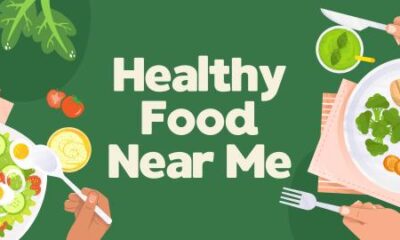
 Uncategorized4 weeks ago
Uncategorized4 weeks agoNavigating the Pursuit of Wellness: Unveiling the Domain of Healthy Food Near Me
-

 Snacks and Appetizers5 months ago
Snacks and Appetizers5 months agoCrunchy crisps from the oven: the perfect snack without the shame
-

 Lunch and Dinner Recipes5 months ago
Lunch and Dinner Recipes5 months agoSeafood sensation: delicious and nutritious fish recipes for a healthy dinner
-

 Lunch and Dinner Recipes5 months ago
Lunch and Dinner Recipes5 months agoVegetarian Stir-Fry: A Burst Of Health And Flavor In Every Bite
-

 Breakfast Recipes5 months ago
Breakfast Recipes5 months agoHomemade power bar: the excellent grab-and-go breakfast option for an active early morning
-

 Snacks and Appetizers5 months ago
Snacks and Appetizers5 months agoDeliciously hot Guacamole and salsa recipes to enhance the great experience
-

 Breakfast Recipes6 months ago
Breakfast Recipes6 months agoProtein-Packed Pancakes: A Delicious Method To Start Your Day
-

 Dietary Preferences and Special Diets6 months ago
Dietary Preferences and Special Diets6 months agoThe Mediterranean Diet Plan: Discovering Heart-Healthy Recipes From The Region



